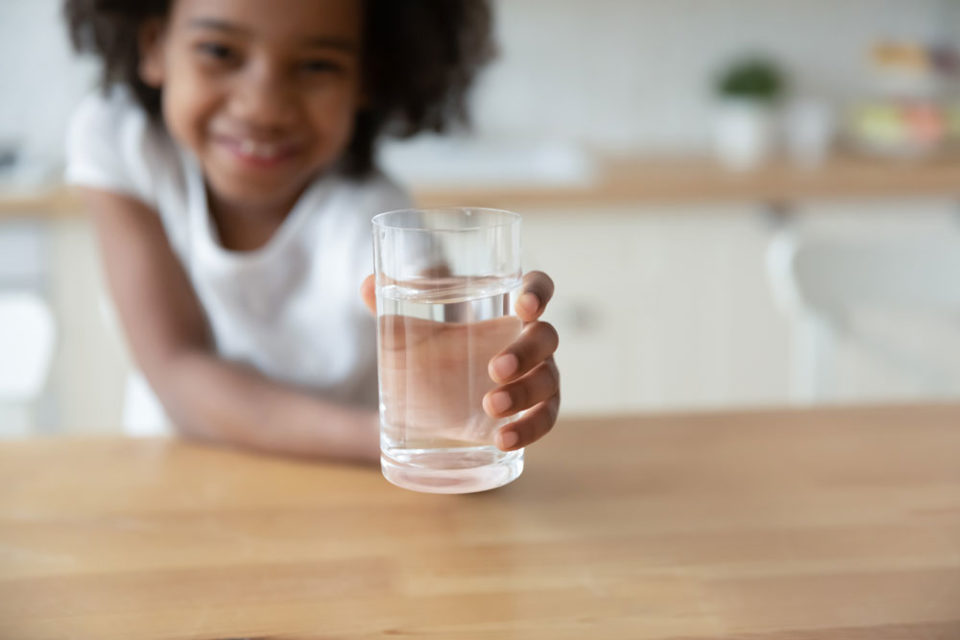From fog-catching to satellite data – the Middle East and Africa is mobilising to tackle the water crisis head on

Hidden in the mountains of southwest Morocco, where the dry, hot desert meets the sea, a group of Berber womenhave mastered the art of capturing the fog that rolls in off the ocean and ‘turning’ it into water.
It seems like magic the way they hang special nets in the air and use them to catch tiny water droplets that are then trapped in the channel below. But fog-catching is actually an age-old technique used for thousands of years by ancient civilizations in Egypt and beyond. And astonishingly, the 870 square metres of nets installed by the women-led NGO, Dar Si Hmad, can collect an average of 22 litres of water per square meter every day.
It’s no surprise communities across the Middle East and Africa (MEA) have had to become so innovative in their approach to accessing water. The region is home to the most water scarce countries in the world and it’s estimated that a staggering 60 percent of people living in the Middle East and North Africa (MENA) have little or no access to drinkable water.
For these countries, necessity is indeed the mother of invention. Like it’s regional counterpart Morocco, the UAE has also found ways of lifting water from air – together Abu Dhabi-based Eshara Capital and Veragon Water Solutions have launched an air-to-water system that produces up to 1 000 litres of drinking water simply by drawing on humidity.
Further south, desalination was one of the more innovative techniques used to help Cape Town narrowly avoid reaching the end of its municipal water supply, otherwise known as ‘Day Zero’. The chemical process, which removes salt from ocean water making it safe to drink, has also seen success in Israel.
Spotlighting the urgency of the crisis
But though great strides have been made across the region, global crises like COVID-19 have a way of highlighting just how far we’ve yet to go.
From the early stages of the pandemic it became clear the best way to avoid COVID-19 was to wash hands frequently and thoroughly. This was highly problematic for many people in sub-Saharan Africa where almost 63 percent of people living in urban areas cannot easily access basic water services and therefore can’t regularly wash their hands.
Given the scope of the water crisis, it’s clear that those who can do more, must. A big part of the answer to the escalating water crisis lies with technology, which can help us better understand where water-stress is emerging and optimise water replenishment investments.
Data is critical to turning the tide
When it comes to improving access to water, quality data from water-stressed areas is crucial. In order to fully understand the problem they are trying to solve, governments need accurate assessments of fluctuating water availability. This data can help them calculate and forecast supply and demand balances, and track water quality.
Already we see the possibility of technology at play through initiatives like Microsoft’s AI4Earth grant, which provides entities looking to solve environmental challenges with access to cloud and AI tools and investments in innovative, scalable solutions.
In Kenya, the combination of AI and IoT is helping to reduce avoidable water loss. Upepo Technology partners with water utilities across the country to deploy smart water metering devices that provide real-time monitoring of water infrastructure. The data produced by these IoT devices helps decision makers, not only accurately measure and manage water, but also predict future trends in consumption to help improve water supply.
This is critical in a country where just 55 percent of the population has access to affordable water. Upepo is still at the beginning of its journey, but it hopes to draw on the scalability of platforms like Microsoft Azure to improve the reliability of water for 2.1 million households.

Focusing efforts on water-guzzling industries
Any genuine effort to address water scarcity across MEA also needs to include solutions that can alleviate the heavy consumption of water by thirsty industries like agriculture. According to the World Bank, 85 percent of water in many MENA countries is consumed by the agriculture sector.
But through the ground-breaking use of satellite data, the DHI Group is able to understand and optimise water use in agriculture. Measuring crop stress related to water is something farmers have had few tools to do before, relying solely on visual cues and intuition. By combining satellite data with AI, farmers and plantation owners can now get a near accurate view of how much water a crop uses and loses in a day, and supply it only with what it needs to thrive.
DHI is another Microsoft AI4Earth grant beneficiary, creating the opportunity for the company to test its satellite concept in more countries, including Uganda. There it is doing a lot of work with the national irrigation scheme, working in the field to take measurements and gather data on crops, and compare these to its satellite-based data.
Solutions like these create hope that water availability in MEA will improve. But the task ahead is enormous and one that requires stakeholders from across the region to come together and take urgent action. It’s the reason why companies like Microsoft are making major moves, partnering with NGOs like Water.org to ensure more than 1.5 million people have access to clean drinking and sanitation water.
NASA has warned that water shortages will be the environmental challenge of the century. What organisations and individuals across MEA do now will determine whether it’s a challenge that can still be overcome.
Source : Microsoft

